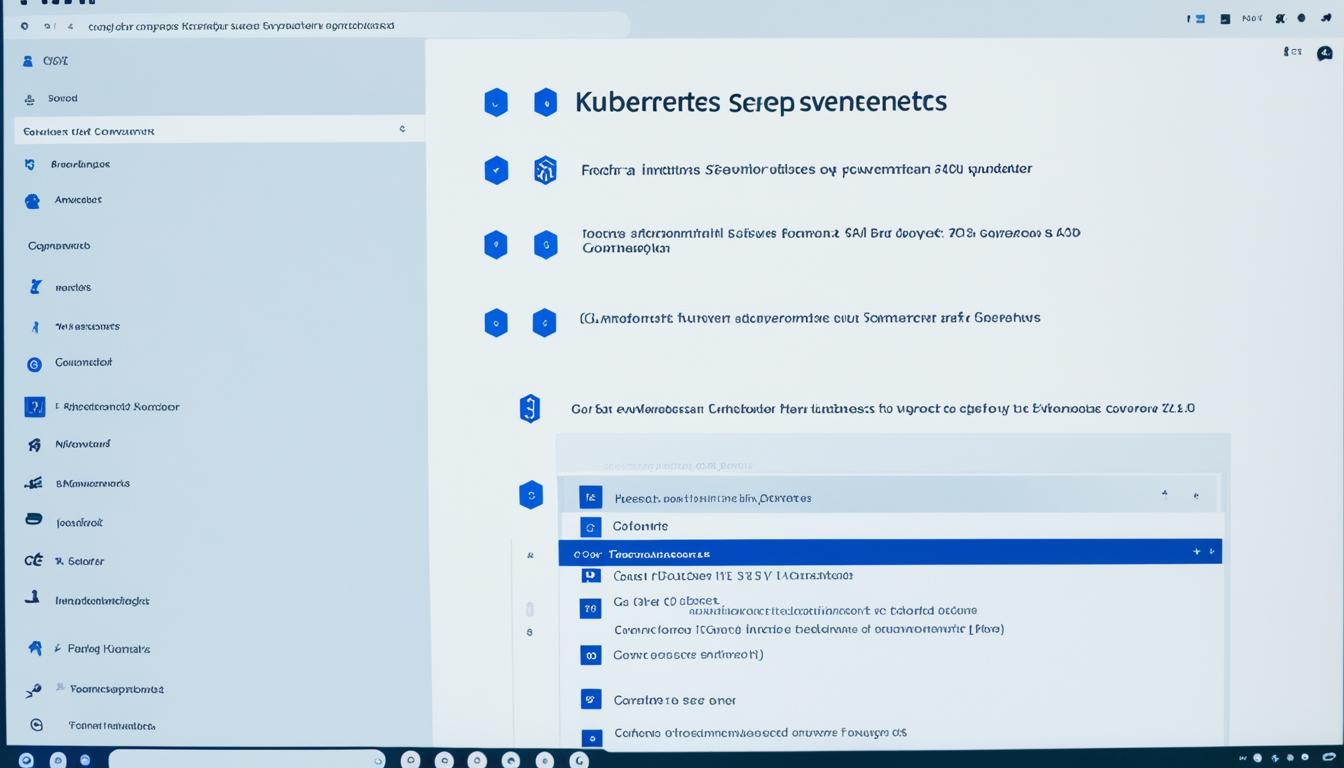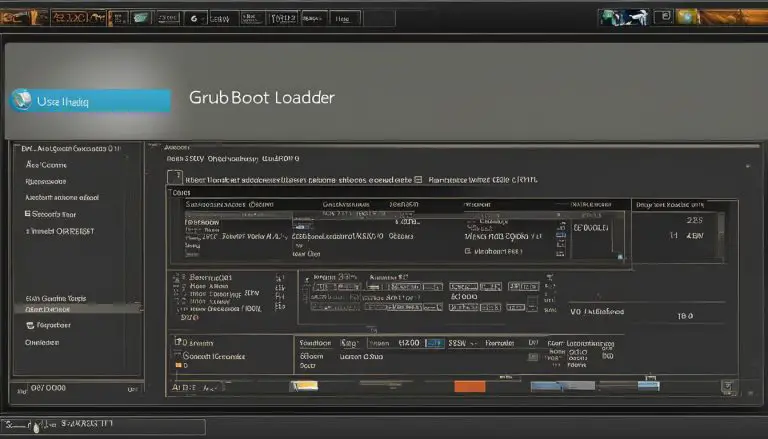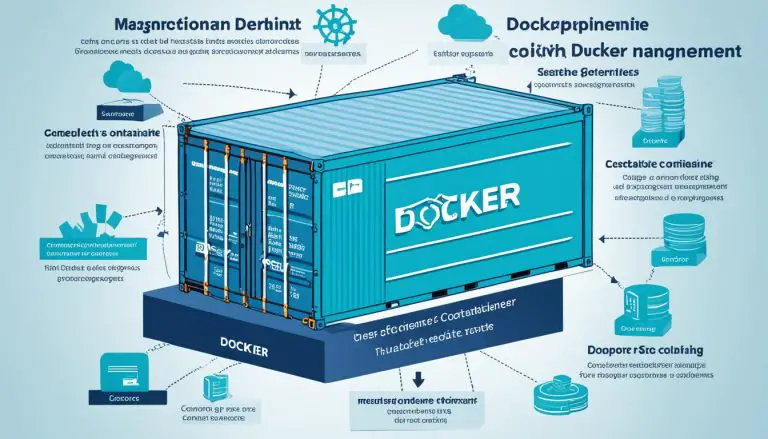Install Kubernetes on Fedora 40: A Step-by-Step Guide
Have you ever wondered why many professionals choose Fedora 40 for Kubernetes clusters?
This guide will walk you through installing Kubernetes on Fedora 40 step by step. Kubernetes, or K8s, is a platform that makes managing application containers easier. Fedora 40 is great for Kubernetes because it’s stable and has modern features. It’s perfect for learning and testing Kubernetes.
We’ll use Kubernetes rpm packages from Fedora 40’s repositories and look at other sources too. This guide will help you with Fedora 40 k8s installation and give you tips for other versions. Let’s start this journey into Kubernetes setup on Fedora together!
For a basic understanding of Docker, which works well with Kubernetes, check out this guide on installing Docker on Ubuntu.
Key Takeaways
- Understanding the benefits of installing Kubernetes on Fedora 40.
- Essential hardware and software requirements for a seamless installation.
- Step-by-step guidance through Kubernetes rpm package installation on Fedora 40.
- Setting up Kubernetes using kubeadm for an optimized setup.
- Troubleshooting common installation and configuration issues.
Introduction to Kubernetes and Fedora 40
Kubernetes has changed how we manage containerized applications. It comes from Google’s work on container orchestration. Now, it’s key to the Cloud Native Computing Foundation. By using this Kubernetes installation guide, we can make the most of Fedora 40, the latest from the Fedora Project.
Putting Kubernetes with Fedora 40 makes a strong, efficient place for making and testing containerized apps. Fedora 40 has new features for both new and experienced users. It combines Kubernetes’ automated app management with Fedora 40’s strong platform for a smooth workflow.
This Fedora 40 Kubernetes setup will guide you in creating a Kubernetes cluster. Use this guide to set up and learn about managing containerized apps. This sets you up for the installation tutorial that comes next, making sure you’re ready for what’s next.
Prerequisites for Installing Kubernetes on Fedora 40
Before you start to install Kubernetes on Fedora 40, make sure your system is ready. This ensures a smooth installation and avoids problems later.
Hardware Requirements
Your system needs a stable network, enough memory, and enough CPU for Kubernetes. These requirements help Kubernetes run your workloads well.
- At least 2 CPUs, but ideally more for production environments.
- A minimum of 2GB RAM, though 4GB or more is recommended for better performance.
- Reliable network connectivity to support communication between nodes.
Software Requirements
First, make sure Fedora 40 is installed on your machine. Also, you’ll need these software components:
- Container runtime support like cri-o or containerd.
- Essential networking ports opened and configured.
These are key to successfully deploy Kubernetes on Fedora and prevent software issues.
Configuration Settings
Right configuration is vital when you install Kubernetes on Fedora 40. Here are the settings for a smooth installation:
- Disable Swap: Kubernetes needs swap disabled to work right. Use this command to do it:
-
1<code>1swapoff -a
- Container Runtime: Set up your chosen container runtime (cri-o or containerd).
- Networking Ports: Make sure needed ports are open and set up correctly for communication.
With these steps done, you’re set to efficiently deploy Kubernetes on Fedora.
Installing Kubernetes rpms on Fedora 40
To set up a strong Kubernetes cluster, start by installing the right Kubernetes rpms on Fedora 40. This guide will show you how to do this using various repositories.
Using the Fedora Repositories
Fedora 40’s repositories make installing Kubernetes rpms easy. They now have reorganized rpms for Kubernetes version 1.29. This ensures you get the latest features and security updates.
- Add the Fedora repository:
1sudo dnf config-manager --add-repo=https://discussion.fedoraproject.org/t/how-to-install-and-use-kubernetes-on-fedora/66266
- Install essential rpms:
1sudo dnf install -y kubelet kubeadm kubectl --disableexcludes=kubernetes
- Make sure cri-o or containerd are installed too.
Also, following steps from kubernetes.io ensures a smooth setup. This avoids any setup issues.
Using Third-Party Repositories
Choosing third-party repositories, like those from the Kubernetes project or COPR, gives you more options. They offer different versions or specific setups. But, be careful to avoid package conflicts.
- Add the third-party repository:
1sudo dnf config-manager --add-repo=https://kubernetes.io/docs/setup/production-environment/tools/kubeadm/install-kubeadm/
- Install the Kubernetes rpms you need:
1sudo dnf install kubelet kubeadm kubectl
- Check the installation to make sure everything is set up right.
These steps will guide you in a solid Kubernetes deployment tutorial. They ensure each package fits your system’s needs.
Setting Up Kubernetes on Fedora 40 with kubeadm
Starting with Kubernetes on Fedora 40 means doing some prep work first. This ensures your setup goes smoothly. By taking these steps, you lay the groundwork for a successful Kubernetes cluster.
Initial System Updates
First, make sure your Fedora 40 system is current. It’s key to update with DNF. Open your terminal and use these commands:
-
1sudo dnf update -y
-
1sudo dnf upgrade --refresh -y
This keeps your system fresh with the newest features and security updates.
Disabling Swap
Then, disable swap on your Fedora 40. Kubernetes needs a swap-free environment to work right. Here’s how:
-
1sudo swapoff -a
- Edit the
1/etc/fstab
file and comment out swap entries.
-
1sudo systemctl disable zram-generator
Installing kubeadm
With everything ready, we can install kubeadm. This tool makes creating and managing Kubernetes clusters easier. Use these commands to install kubeadm:
-
1sudo dnf install -y kubeadm
-
1sudo systemctl enable kubelet
-
1sudo systemctl start kubelet
These steps help you install kubeadm. Now, you can manage your Kubernetes setup on Fedora 40 well. By doing this, you’re setting up a Kubernetes environment ready for more work and deployment.
Verifying Kubernetes Installation
After setting up your Kubernetes cluster on Fedora 40, it’s key to check if everything went well. This guide, similar to this Kubernetes installation guide, will help you do just that.
Using kubectl
kubectl is the main tool for checking if Kubernetes is installed right. It lets you work with your cluster, manage resources, and do admin tasks. Start by using these commands to see if kubectl is set up right:
-
1kubectl config view
-
1kubectl cluster-info
These commands should show you info about your cluster and the control plane. If you run into problems, look at another installation guide for help.
Checking Node Status
Make sure all nodes in your cluster are up and running. Use this command to check their status:
-
1kubectl get nodes
This command lists all nodes in the cluster and their statuses. All nodes should be in the “Ready” state, showing they’re working well. A cluster with active nodes and a working control plane means your installation is a success and you’re ready to deploy apps.
Checking your Kubernetes setup’s health and connectivity is vital. By using this Kubernetes installation guide, you make sure everything in your cluster is talking and working right.
Deploying Your First Application on Kubernetes
Kubernetes really shows its strength when you deploy your first application. After setting up your Fedora-hosted Kubernetes cluster, it’s time to put your app to work. You’ll need to create a Kubernetes deployment. This tells Kubernetes how many copies of your app to run and how to update them.
Then, you must make the deployment accessible by exposing it.
Creating a Deployment
To start creating a Kubernetes deployment, you write a YAML file for the deployment. This file lists details like how many replicas, the container image, and more. Once you have this file ready, you can use kubectl to apply it:
Kubernetes will then take care of deploying and updating the instances as needed.

Exposing the Deployment
After creating a Kubernetes deployment, you need to expose it so people can get to it. This is done by making a service that directs traffic to the right pods. You can set up a service in YAML and apply it with kubectl:
This command makes the deployment visible by creating a LoadBalancer service. Now, your app is ready for the world to see, thanks to easy deployment and exposure steps.
Common Issues and Their Solutions
Setting up Kubernetes on Fedora 40 was not easy. I faced many challenges that made me go back to the installation steps. Here are some common Kubernetes common issues I found, along with how to fix them.
Installation Errors
Installation errors can come from many things like wrong Kubernetes versions, missing parts, or not enough hardware. To avoid these problems, make sure:
- All needed parts are installed and current.
- Your hardware can handle Kubernetes’ needs.
- Your Fedora version works well with the Kubernetes you want.
Configuration Issues
Configurations can go wrong with networking, firewall settings, or wrong service setups. Fix these by:
- Checking and tweaking network settings.
- Setting up firewalls to let Kubernetes traffic through.
- Reviewing service files to make sure they’re right, following Kubernetes guides.
Knowing these Kubernetes common issues and how to fix them helps you set up Kubernetes on Fedora 40 more smoothly.
Conclusion
This guide has given you the knowledge to set up Kubernetes on Fedora easily. It covers everything from the needed hardware and software to installing Kubernetes using Fedora and other repositories.
We looked at how to set up your cluster with kubeadm and did important tasks like updating your system and turning off swap. We also showed how to check if your installation works right with kubectl and node status checks. If you run into problems, there’s a section with solutions to help you.
Getting your first app running on Kubernetes is a big step. This guide makes it simple for you. As we wrap up, I suggest checking out more resources like the article on Kubernetes with CRI-O on Fedora Linux for more info. Your journey to learn container orchestration on Fedora is starting, and the skills you learn here will be very useful.
FAQ
What are the hardware requirements for installing Kubernetes on Fedora 40?
What software prerequisites are needed before installing Kubernetes on Fedora 40?
How do I disable swap on Fedora 40 for Kubernetes installation?
What are the steps to install Kubernetes rpms using Fedora repositories?
Can I use third-party repositories for installing Kubernetes on Fedora 40?
How do I perform initial system updates on Fedora 40?
What is kubeadm, and how do I install it on Fedora 40?
How do I verify the Kubernetes installation on Fedora 40?
What is the process for deploying my first application on Kubernetes?
What common issues might I encounter during Kubernetes installation and how do I resolve them?
Source Links
- https://discussion.fedoraproject.org/t/how-to-install-and-use-kubernetes-on-fedora/66266
- https://docs.fedoraproject.org/en-US/quick-docs/using-kubernetes/
- https://blog.devops.dev/spiritual-kubernetes-install-78bd59c6792e
- About the Author
- Latest Posts
Mark is a senior content editor at Text-Center.com and has more than 20 years of experience with linux and windows operating systems. He also writes for Biteno.com






